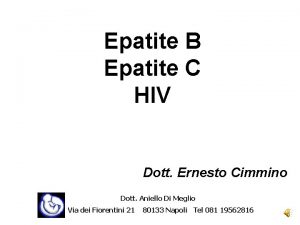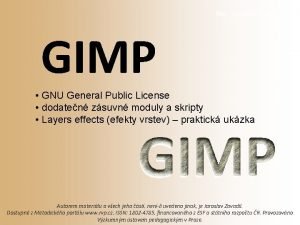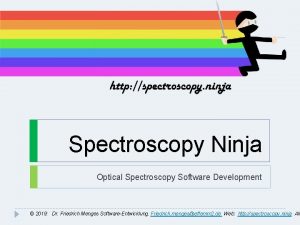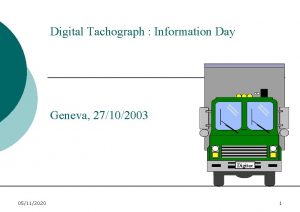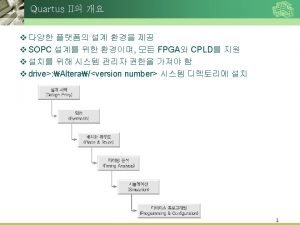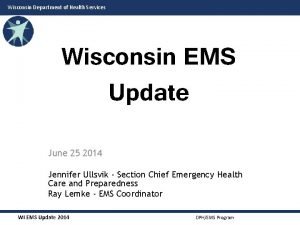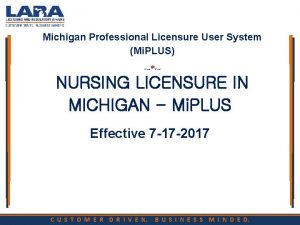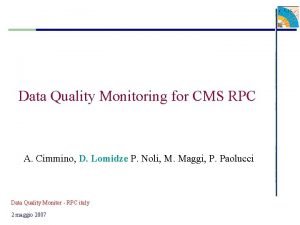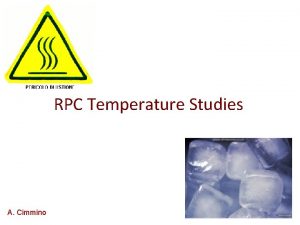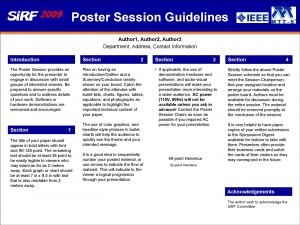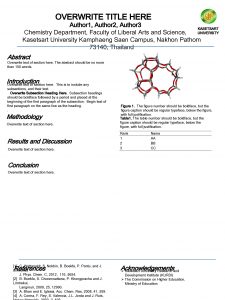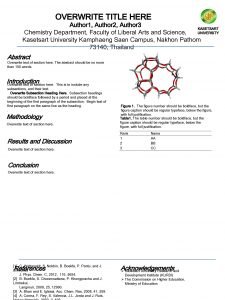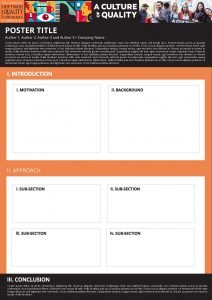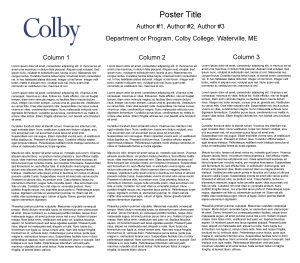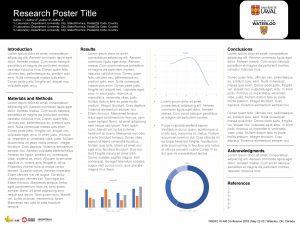Author Vincent M Cimmino M D 2011 License












































































- Slides: 76

Author: Vincent M. Cimmino, M. D. , 2011 License: Unless otherwise noted, this material is made available under the terms of the Creative Commons Attribution – Share Alike 3. 0 License: http: //creativecommons. org/licenses/by-sa/3. 0/ We have reviewed this material in accordance with U. S. Copyright Law and have tried to maximize your ability to use, share, and adapt it. The citation key on the following slide provides information about how you may share and adapt this material. Copyright holders of content included in this material should contact open. michigan@umich. edu with any questions, corrections, or clarification regarding the use of content. For more information about how to cite these materials visit http: //open. umich. edu/education/about/terms-of-use. Any medical information in this material is intended to inform and educate and is not a tool for self-diagnosis or a replacement for medical evaluation, advice, diagnosis or treatment by a healthcare professional. Please speak to your physician if you have questions about your medical condition. Viewer discretion is advised: Some medical content is graphic and may not be suitable for all viewers.

Citation Key for more information see: http: //open. umich. edu/wiki/Citation. Policy Use + Share + Adapt { Content the copyright holder, author, or law permits you to use, share and adapt. } Public Domain – Government: Works that are produced by the U. S. Government. (17 USC § 105) Public Domain – Expired: Works that are no longer protected due to an expired copyright term. Public Domain – Self Dedicated: Works that a copyright holder has dedicated to the public domain. Creative Commons – Zero Waiver Creative Commons – Attribution License Creative Commons – Attribution Share Alike License Creative Commons – Attribution Noncommercial Share Alike License GNU – Free Documentation License Make Your Own Assessment { Content Open. Michigan believes can be used, shared, and adapted because it is ineligible for copyright. } Public Domain – Ineligible: Works that are ineligible for copyright protection in the U. S. (17 USC § 102(b)) *laws in your jurisdiction may differ { Content Open. Michigan has used under a Fair Use determination. } Fair Use: Use of works that is determined to be Fair consistent with the U. S. Copyright Act. (17 USC § 107) *laws in your jurisdiction may differ Our determination DOES NOT mean that all uses of this 3 rd-party content are Fair Uses and we DO NOT guarantee that your use of the content is Fair. To use this content you should do your own independent analysis to determine whether or not your use will be Fair.

Your Patient Has Breast Cancer Until You Prove She Doesn’t M 2 - Reproduction Sequence Vincent M. Cimmino, MD Clinical Professor of Surgery University of Michigan Winter, 2011 Division of Surgical Oncology

The patient is a 25 year old female with a mass in the lower inner quadrant of the right breast.

Fibroadenoma • Most common breast neoplasm in adolescents and young adult women. • Usually presents as a solitary, painless, well-circumscribed, mobile mass. • 25% are multiple. • More common in African-Americans than Caucasians.

Source Undetermined

Source Undetermined

The patient is a 37 year old female complaining of pain in both breasts but more pronounced prior to the beginning of her menses.

Fibrocystic Changes • Affect 30% to 35% of women between ages of 20 and 40 years. • Usually multifocal and bilateral. • Most common complaint is premenstrual swelling and tenderness. • Symptoms gradually disappear after menopause. • Not associated with an increased risk for cancer unless lobular or ductal atypical hyperplasia involved. • Treatment involves use of NSAIDS, oral contraceptives, evening primrose oil or yam cream.

1 -21 -05 Source Undetermined

2 -1 -05 Source Undetermined

Source Undetermined

A 35 year old Caucasian female comes to your office and states that she has had a nipple discharge on the left for three months.

Intraductal Papilloma • Benign local proliferation of ductal epithelial cells. • Unilateral serosanguinous or bloody nipple discharge. • Treatment: • • • Ductogram Ductoscopy Excise affected duct

Ductogram: dilated duct with intralumenal filling defect. Source Undetermined

Source Undetermined

A 40 year old female strong history of fibrocystic breast disease comes to your office and states that she had a mammogram done two weeks ago which showed a suspicious lesion in her right breast.

ALND Controversy • • • To do or not to do Er+ Pr+ H 2 NT 1 and T 2 tumors Sentinel lymph node positive Patients to undergo radiation and/or chemotherapy • Volume of metastasis in lymph node

Radial Scar • Mimics invasive carcinoma on mammogram and on physical exam (if large enough to be palpable). • Bilateral in 45%. • A frequent finding in women with fibrocystic disease. • No risk for subsequent development of invasive carcinoma.

Source Undetermined

A female presents complaining of nipple pain during breastfeeding with focal erythema and warmth of breast on physical exam.

Mastitis or Breast Abscess • Usual etiology: Staphylococcus aureus or streptococcus infection. • Most commonly occurs during breast-feeding. • Focal tenderness with erythema possibly with a fluctuant mass. • Ultrasound helpful with diagnosis. • Antibiotics with or without drainage is usual treatment. • If abscess needs drainage.

A 30 year old female presents with a painful breast mass several weeks after sustaining significant trauma from a seat belt after an auto accident.

Fat Necrosis • History of trauma in 50% of patients. • Often present after breast reconstruction. • Irregular mass without discrete borders may or may not be tender. • Often indistinguishable from carcinoma clinically or mammographically. • Diagnosis by excisional biopsy.

Source Undetermined

A 38 year old female enters your office with a history of a large mass in her left breast. She states that it has expanded rapidly over the last month.

Phyllodes Tumor (Crystosarcoma Phyllodes) • • • <. 5% of all breast tumors. Majority are benign. A variant of fibroadenoma Most present as a large mass. Often present for many years before sudden enlargement. • Occasionally quite massive and stretch the skin, displace the nipple and distend overlying veins.

Treatment of Phyllodes Tumor • Excision with at least 1 cm margin. • Simple Mastectomy or Lumpectomy. • Axillary dissection usually not indicated (axillary nodes palpable in 20% but positive in <. 5%). • Radiation if chest wall involvement. • Chemotherapy for metastatic disease (sarcoma protocol).

8 -20 -04 Source Undetermined

A 60 year old male comes to your office complaining of bilateral enlargement of his breasts over the last 6 months.

Gynecomastia • Development of female like breast tissue in males. • Most common abnormality of male breast. • Often associated with other disease conditions, hyperthyroidism, cirrhosis, chronic renal failure, pulmonary malignancy, testicular tumors. • Secondary to certain drug use: antibiotic steroids, digitalis, cimetidine, spironolactone, marihuana, and tricyclic antidepressants.

A 35 year old lady undergoes a right breast excisional biopsy for a suspected fibroadenoma. Pathology returns diagnosis of fibroadenoma + LCIS or atypical ductal hyperplasia.

High Risk Lesions of the Breast • Atypical ductal hyperplasia. • Lobular carcinoma in-situ. • If found must do wire localization excisional biopsy 15 -20% have DCIS. • Do not need margins for LCIS or ADH.

Lobular Carcinoma In-Situ (LCIS) • A predictor of increased risk of subsequent invasive carcinoma. • If invasive carcinoma develops most are ductal. • Risk of 20 to 30% bilateral. • Almost always found incidentally. • No mammographic finding. • 20 -25% of women will develop invasive cancer.

Treatment of LCIS • Careful follow-up (physical exam every 6 months and mammogram yearly). • Prophylactic bilateral simple mastectomies with or without reconstruction. • Chemoprevention with Tamoxifen or other agent.

Source Undetermined

A 45 year old female comes to your office with a mammogram containing microcalifications.

Differential Diagnosis of Microcalcifications • • 15% will be malignant. Invasive carcinoma of breast. Ductal carcinoma in-situ Benign causes • Fibroadenoma • Sclerosing adenosis • Fibrocystic disease

Ductal Carcinoma In-Situ • Usually heralded by microcalifications on mammography. • Sometimes associated with a mass. • Must excise with 3 mm margin. • Treat with radiation post-op. • Sentinel lymph node biopsy usually not necessary. • If recurs 50% are invasive. • Most recur within 1 cm of previous excision. • If ER+, PR+ treat with SERM.

Source Undetermined

Source Undetermined

A 45 year old female presents to your office with a mass in her right breast which she identified 1 month ago while showering.

Important Historical Questions • • • When was last mammogram. Family history of breast cancer. Age at menarche. Age at menopause (if appropriate). Age at first pregnancy. History of ionizing radiation exposure. Postmenopausal hormone replacement therapy. Use of oral contraceptives. Did the patient breast feed children.

Increased Risk • • Prior personal history of breast cancer. History of atypical ductal hyperplasia or LCIS. Early menarche < 13 years. Late menopause > 55 years. Nulliparity. Exposure to radiation. First degree relative with breast cancer, prostate cancer or ovarian cancer. • Postmenopausal hormone replacement. • Genetic predisposition (BRCA 1 or 2, P 53, mutation).

Diagnostic Options • • Mammography. Ultrasound. Core biopsy (percutaneous or image guided). Fine needle aspiration (FNA). Wire localization excisional biopsy. Excisional biopsy. Sentinel lymph node biopsy. FNA of lymph nodes.

Mammography • • • Sensitivity 80 -90%. Identifies about 5 cancers/1000 women. If detected by mammography 80% have negative nodes vs. 45% if detected clinically. • Much less effective in < 35 age group and in patients who have taken endogenous hormones.

Ultrasound • • No ionizing radiation Cheap. Good for identifying cystic disease. Can aid in biopsying a mass or calcifications. • May be helpful in patients with dense breast tissue.

Fine Needle Aspiration (FNA) • • • Low morbidity. Cheap. False positive 1 -2%. False negative up to 10%. Requires a skilled pathologist. More difficult to determine receptor status.

Stereotactic Core Biopsy • Fewer complications compared to wire localization. • Less chance of a sampling error than core biopsy alone. • Does not require OR. • Receptor status easily determined. • Used for non-palpable lesions.

Wire Localization Biopsy • • Requires the OR. May cause deformity of the breast. Requires a surgeon. Must coordinate surgeon and radiologist times. • Non-palpable lesions. • May be necessary depending on location of the lesion.

Breast Cancer Epidemiology • One in 8 women will contract. • Approximately 215, 000 new cases in United States this year. • 15% of all cancer deaths in women in U. S. • Incidence increases with age. • More common in Caucasians except in the under 40 age group. • <1% occur in men.

Invasive Ductal Carcinoma • Most common type of invasive carcinoma of the breast 75 -80%. • Most common sites of metastasis are axilla, lungs, liver, bone, and brain. • Usually diagnosed after finding a mass on mammography or by palpation.

Treatment Options • Lumpectomy and sentinel lymph node (SLNB) biopsy. • Mastectomy and sentinel lymph node (SLNB) biopsy. • Lumpectomy or mastectomy and axillary lymph node dissection (ALND). • Neoadjuvant chemotherapy. • Hormonal therapy. • Adjuvant chemotherapy. • Radiation therapy.

Receptor Status of Tumor • Estrogen receptor + better prognosis. Can use SERMS (Selective estrogen receptor modulators). • Estrogen receptor (-). Worse prognosis SERMS not effective. • HER-2 -NEU receptor overexpressed worse prognosis. • Current controversy over use of SERMS in ER –PR+ patients. • ER+ tumors have poorer response to chemotherapy.

Source Undetermined

Source Undetermined

Invasive Lobular Carcinoma • 5 -15% of all invasive carcinomas of the female breast. • Usually presents as ill-defined, painless mass or a vague thickening or nodularity. • Tends to be more extensive than mammography suggest. • 15 -30% multicentric. • Contralateral carcinoma develops in 10% to 15%. • Treatment is same as invasive ductal carcinoma.

Source Undetermined

Other Types of Breast Cancer • • • Papillary Tubular Medullary Inflammatory Paget’s Disease Male Breast Cancer

Inflammatory Breast Cancer • • • One to 2% of all invasive breast cancers. Most lethal breast cancer. Vascular and lymphatic invasion commonly seen at pathologic evaluation. Frequently presents with erythema, “peau d’orange”, and nipple retraction. Treatment is neoadjuvant chemotherapy followed by surgery and radiation. Surgical treatment is a Modified Radical Mastectomy.

Paget’s Disease of the Breast • About 2% of all invasive breast cancers. • Usually associated with underlying ductal carcinoma extending within the epithelium of the main excretory ducts to the skin of the nipple and areola. • Presentation: Tender, itchy nipple with or without bloody discharge with or without subareolar palpable mass. • Treatment is either central segmentectomy or mastectomy with SLN or ALND. • Chemotherapy and/or radiation as indicated.

Source Undetermined

Breast Cancer In Males • Less than 1% of all breast cancers. • Predisposing factors: Klinefeltor’s Syndrome, estrogen therapy, elevated endogenous estrogen, previous irradiation and trauma. • Infiltrating ductal carcinoma most common. • Diagnosis tends to be late often with mass, nipple retraction and skin changes. • Stage by stage survival is same as women. • Treatment involves mastectomy and SLNB/or ALND.

Breast Cancer in Pregnant and Lactating Women • Three breast cancers per 10, 000 pregnancies. • Biopsy should be done if there is a suspicious mass. • Mammography can be done if there is proper shielding. • Radiation is not advised for pregnant women therefore MRM is advised. • Delay chemotherapy to the second trimester. • Suppress lactation after delivery.

Common Chemotherapeutic Drugs • • • Anthracyclines (Adriamycin) Cyclophosphamide (Cytoxan) 5 -fluorouracil Taxanes (Paclitaxel, Taxotere) Trastusamab (Herceptin)

Other Agents • Monoclonal antibodies • Transtuzumab (Herceptin) • Bevacizumab (Avastin) • Impedes neovascularization • Interferes with VEGF • Bisphonates – inhibits Osteoclastic activity • Zometa

Hormone Manipulation • Tamoxifen (receptor blocker) • Aromatase inhibitor • Arimidex (anastrozole) • Femara (letrozole) • Exemestane (aromasin) • Faslodex (fulvestrant)

Radiation • Give when breast sparing procedure • Give when tumor involves the chest wall or skin. • Give when four or more nodes positive. • Decrease local recurrence by 40 -50%.

Oncotype DX • • • Gene – based assay of tumor tissue Helps determine the risk of recurrence Helps guide chemotherapy decisions Applies to ER+ HER 2 NEU- patients Patients must be node negative or have micrometastasis. 2 -2 mm • Tumors 6 mm – 1 cm with moderately to poorly differentiated features or unfavorable features • Tumors > 1 cm with favorable features • TAILOR X trial

Referral for Genetics Evaluation An affected individual with 1 or more of: • Early age onset breast cancer • Triple negative disease • Two primary breast cancers • Breast cancer at any age, plus • ≥ 1 Close relative with breast cancer under age 50 • ≥ 1 Close relative with ovarian, fallopian tube or primary peritoneal cancer at any age • ≥ 2 Close relatives with breast cancer or pancreatic cancer at any age

Referral for Genetics Evaluation An affected individual with one or more of: • Combination of breast cancer with one or more of: • Thyroid cancer, sarcoma, adrenocortical carcinoma, endometrial cancer, pancreatic cancer, brain cancer, diffuse gastric cancer, mucocutaneous lesions or leukemia/lymphoma on the same side of the family • Ovarian, fallopian tube or primary peritoneal CA • Male breast cancer

Referral for Genetics Evaluation An unaffected individual with a FHx of 1 or more of: • ≥ 2 Breast cancer primaries from same side • ≥ 1 Ovarian cancer primaries from same side • Combination of breast cancer with 1 or more of: • Thyroid cancer, sarcoma, adrenocortical carcinoma, endometrial cancer, pancreatic cancer, brain cancer, diffuse gastric cancer, mucocutaneous lesions or leukemia/lymphoma from same side of family • Known mutation in breast cancer gene • Male breast cancer • From a population at risk

Genetics • Malone et al conducted a population based case control study on data from 1983 -1992 • The likelihood that a women with breast cancer under age 35 has a detectable BRCA 1/2 mutation is 9. 4% Malone et al. Frequency of BRCA 1/BRCA 2 mutations in a population-based sample of young breast carcinoma cases. Cancer. 2000; 88: 1393 -1402.

Genetics • Li-Fraumeni Syndrome • • Autosomal dominant Highly penetrant Young age at onset of malignancies Identifiable germline mutation in TP 53

Genetics • Li-Fraumeni syndrome diagnostic criteria • A proband diagnosed with sarcoma when younger than 45 years of age • A first-degree relative with any cancer diagnosed when younger than 45 years of age • Another first-degree or second-degree relative of the same genetic lineage with any cancer diagnosed when younger than 45 years or sarcoma at any age

Genetics • Cowden’s syndrome • • • Autosomal dominant Variable expression, high penetrance Prevalence of 1 in 200, 000 Mutation in PTEN Breast cancer in 20 -35%
 First author second author third author
First author second author third author Ernesto cimmino
Ernesto cimmino Capa-cs collaborative agreement
Capa-cs collaborative agreement Yamm license
Yamm license Efficient elements download
Efficient elements download Dhec home care license
Dhec home care license John doe drivers license
John doe drivers license Coam reporting
Coam reporting Kentucky board of nursing website
Kentucky board of nursing website Herbicide license ontario
Herbicide license ontario Microsoft spla reporting software
Microsoft spla reporting software Dfs inc flex plan
Dfs inc flex plan License
License Ptal california medical board
Ptal california medical board Manufacturing tech license
Manufacturing tech license Fmvrs card
Fmvrs card Work based learning license mn
Work based learning license mn When did the initial gdl law become effective in alabama?
When did the initial gdl law become effective in alabama? Creative commons license
Creative commons license Gimp license
Gimp license Kentucky nursing license application
Kentucky nursing license application New mexico interlock
New mexico interlock Manufacturing technician license
Manufacturing technician license Nuuo license
Nuuo license Scapi error no license manager
Scapi error no license manager Microsoft service provider license agreement
Microsoft service provider license agreement Images with creative commons license
Images with creative commons license Oregon lpn scope of practice
Oregon lpn scope of practice Software licensing best practices
Software licensing best practices Spectragryph license key
Spectragryph license key Nhp site license
Nhp site license Sas license cost
Sas license cost Figurative language in percy jackson chapter 12
Figurative language in percy jackson chapter 12 Boat license missouri
Boat license missouri Any vehicle operated by a gdl driver under 21, must display
Any vehicle operated by a gdl driver under 21, must display Nc license and theft bureau phone number
Nc license and theft bureau phone number Oracle unified auditing license
Oracle unified auditing license Interior decorating license
Interior decorating license Alabama drivers manual
Alabama drivers manual Snapshot standby
Snapshot standby Michigan department of licensing and regulation
Michigan department of licensing and regulation Creative commons license
Creative commons license Adobe creative cloud for education device license
Adobe creative cloud for education device license How to get a salvage dealer license in florida
How to get a salvage dealer license in florida Smart tachograph license missing vdo
Smart tachograph license missing vdo Rspo trademark license
Rspo trademark license Quartus web edition download
Quartus web edition download Dcas dubai
Dcas dubai Texas state guard maritime regiment
Texas state guard maritime regiment Bccnp provisional license
Bccnp provisional license Emd license
Emd license Wi ems wards
Wi ems wards Wisconsin sales tax license
Wisconsin sales tax license Dcjs unarmed security renewal online
Dcjs unarmed security renewal online Prepare software audit
Prepare software audit Kofax vrs elite
Kofax vrs elite Railway land licensing circular
Railway land licensing circular Kepware license activation
Kepware license activation Onvifer pro license key
Onvifer pro license key Nj 6 points of identification
Nj 6 points of identification Liquor license botswana
Liquor license botswana Creative commons
Creative commons Comsol fnl
Comsol fnl North carolina board of professional counselors
North carolina board of professional counselors Odc license consultants
Odc license consultants Georgia board of engineers
Georgia board of engineers Natural health product licensing canada
Natural health product licensing canada Osbn license
Osbn license Omma transporter agent employment verification form
Omma transporter agent employment verification form Bc gaming account summary report
Bc gaming account summary report Creative commons license
Creative commons license Kentucky board of nursing investigation branch
Kentucky board of nursing investigation branch Maryland state board of dental examiners
Maryland state board of dental examiners During the initial licensing phase
During the initial licensing phase Georgia coam reporting
Georgia coam reporting Microsoft effective license position
Microsoft effective license position Mi plus log in
Mi plus log in

